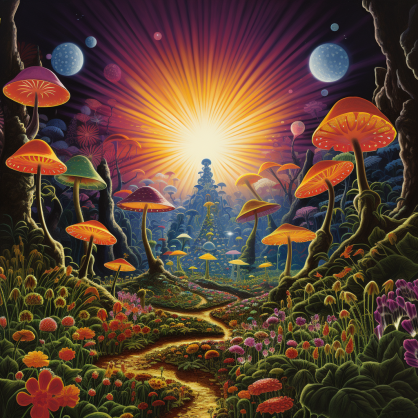
 The Most Influential Psychedelic Rock Producers and Engineers
The Most Influential Psychedelic Rock Producers and Engineers
Leave a comment
Psychedelic rock emerged in the mid-1960s as a vibrant genre that captured the spirit of a cultural revolution, characterized by its mind-bending sounds, innovative recording techniques, and explorations of altered states of consciousness. The genre is often associated with the counterculture movement of the era, blending elements of rock, blues, jazz, and Eastern music, and incorporating new technologies and experimental approaches to music production. Central to the genre’s evolution were the talented producers and engineers who helped shape its unique soundscapes. In this article, we will explore some of the most influential psychedelic rock producers and engineers who left an indelible mark on the genre, their innovative techniques, and their lasting legacy.
The Birth of Psychedelic Rock: Key Innovations
Psychedelic rock arose during a time of great social and political upheaval. The late 1960s saw the rise of the counterculture movement, which sought to challenge mainstream societal norms. Musicians began experimenting with sound and form to create music that reflected the era’s revolutionary spirit. The roots of psychedelic rock can be traced back to earlier genres, such as folk, blues, and experimental jazz. However, it was the combination of these influences, along with the advent of new recording technologies, that led to the genre’s unique sound.
Innovations in studio technology played a critical role in the development of psychedelic rock. The use of reverb, delay, distortion, and unconventional instruments became defining characteristics of the genre. For example, artists began to explore the use of tape loops and sound effects to create an immersive experience for listeners. Producers and engineers were instrumental in these developments, often serving as collaborators in the creative process. Their ability to manipulate sound and shape the sonic landscape became as vital as the musicians’ performances themselves.
Joe Meek – A Pioneer of Experimental Sound Engineering
One of the earliest innovators in sound engineering was Joe Meek, whose work in the 1960s paved the way for many psychedelic rock producers that followed. Known for his experimental approach and willingness to push the boundaries of conventional recording techniques, Meek produced several notable hits in the early 1960s, including “Telstar” by The Tornados.
Meek’s studio was a laboratory for sonic experimentation, where he employed techniques such as reverb, panning, and layering. He was known for using unconventional recording spaces, often transforming his home studio into an echo chamber to create unique sound effects. Meek’s innovative spirit influenced a generation of producers, establishing the idea that the studio itself could be an instrument in the creation of music. His influence can be seen in the works of later psychedelic rock producers who embraced similar experimental philosophies.
George Martin – The ‘Fifth Beatle’ and the Psychedelic Era of The Beatles
Perhaps the most famous producer associated with psychedelic rock is George Martin, often referred to as the “Fifth Beatle” due to his significant role in shaping the sound of The Beatles. Martin’s collaboration with the band during their most experimental period resulted in some of the most iconic albums in music history, including Sgt. Pepper’s Lonely Hearts Club Band.
Martin was known for his willingness to embrace unconventional techniques and sounds. He incorporated elements such as tape loops, reverse effects, and complex orchestration into The Beatles’ music. One of the most notable examples of his innovative production can be found in the song “A Day in the Life,” which features an orchestra swell that builds to a climactic crescendo, showcasing Martin’s ability to blend traditional orchestration with rock music. His creative vision and technical expertise allowed The Beatles to explore new musical territories, influencing countless artists in the psychedelic rock genre and beyond.
Phil Spector – The Wall of Sound and Its Influence on Psychedelic Rock
Another pivotal figure in the evolution of psychedelic rock is Phil Spector, renowned for his “Wall of Sound” production technique. Spector’s approach involved layering multiple instruments and vocal tracks to create a rich, textured sound. His work in the early 1960s with artists like The Ronettes and The Crystals set the standard for pop production.
Spector’s Wall of Sound involved the use of echo chambers and a large ensemble of musicians, creating a dense and immersive listening experience. This technique influenced the psychedelic rock movement, as artists began to adopt similar layering methods to achieve their desired sound. For example, The Beach Boys’ Brian Wilson was heavily inspired by Spector’s production style, which he integrated into his own work on Pet Sounds. Spector’s influence on the genre is undeniable, as his techniques helped shape the lush and expansive soundscapes that became synonymous with psychedelic rock.
Dave Hassinger – Studio Wizardry with The Rolling Stones and The Electric Prunes
Dave Hassinger was another key producer and engineer whose contributions to psychedelic rock cannot be overlooked. He worked with influential bands like The Rolling Stones and The Electric Prunes, helping to craft some of the era’s most memorable tracks. Hassinger was known for his innovative use of studio effects, including distortion and echo, to create a “trippy” sonic experience.
His work on The Rolling Stones’ Their Satanic Majesties Request showcased his ability to blend rock with experimental sounds. The album is often regarded as the band’s foray into psychedelia, featuring tracks like “She’s a Rainbow” that incorporate lush string arrangements and layered vocals. Hassinger’s influence extended to The Electric Prunes, whose album Mass in F Minor exemplified the fusion of rock and experimental sound. Through his innovative techniques, Hassinger helped define the psychedelic rock sound of the late 1960s.
Eddie Kramer – Sound Architect for Jimi Hendrix
Eddie Kramer is perhaps best known for his work with the legendary Jimi Hendrix, who remains one of the most iconic figures in psychedelic rock. Kramer’s innovative production techniques played a crucial role in shaping Hendrix’s sound, which blended blues, rock, and experimental elements.
Kramer was adept at using studio effects to create a sonic landscape that matched Hendrix’s adventurous spirit. Techniques such as flanging, phasing, and extensive use of feedback became hallmarks of Hendrix’s recordings. For instance, the song “Purple Haze” features a signature guitar sound that showcases Kramer’s innovative production. By manipulating sound in the studio, Kramer helped to elevate Hendrix’s music to new heights, solidifying his place in the pantheon of psychedelic rock legends.
Tom Wilson – Shaping the Sound of The Velvet Underground and Frank Zappa
Tom Wilson was an influential producer whose work with The Velvet Underground and Frank Zappa significantly shaped the sound of psychedelic rock. Wilson’s approach to production was characterized by a willingness to experiment and push boundaries, making him a key figure in the genre’s development.
His work with The Velvet Underground on their self-titled debut album introduced listeners to a raw and unfiltered sound that was unlike anything else at the time. Wilson’s ability to capture the band’s experimental spirit and unique sound laid the groundwork for the alternative and punk rock movements that would follow. He also produced Frank Zappa’s early works, where he incorporated innovative studio techniques that would later influence countless musicians. Wilson’s contributions to the genre helped to expand the definition of psychedelic rock, incorporating avant-garde elements that challenged conventional music norms.
Brian Wilson – Sonic Visionary of The Beach Boys
Brian Wilson, the mastermind behind The Beach Boys, is another pivotal figure in the realm of psychedelic rock producers. His groundbreaking work on the album Pet Sounds is often cited as one of the most significant contributions to the genre. Wilson’s innovative approach to songwriting and production pushed the boundaries of popular music.
Wilson’s techniques included the use of unconventional instruments, complex vocal harmonies, and intricate arrangements. The lush soundscapes of Pet Sounds feature elements such as theremin, bicycle bells, and unconventional percussion. The album’s track “Good Vibrations” is a prime example of Wilson’s production prowess, incorporating a variety of instruments and layers to create a rich and immersive experience. His willingness to experiment and break traditional musical conventions helped shape the sound of psychedelic rock, influencing countless artists in the years to come.
Contemporary Influences – How Psychedelic Rock Production Techniques Persist Today
The influence of psychedelic rock producers and engineers can still be felt in contemporary music. Modern artists often draw inspiration from the innovative techniques developed during the psychedelic era, incorporating elements of the genre into their work. Producers like Tame Impala’s Kevin Parker and MGMT’s Andrew VanWyngarden have embraced psychedelic sounds, using lush instrumentation and experimental production techniques to create modern interpretations of the genre.
Additionally, the resurgence of interest in vinyl and analog recording methods has led to a revival of the sonic aesthetics associated with psychedelic rock. Today’s musicians often seek to replicate the warmth and richness of vintage recordings, utilizing similar techniques to those employed by the genre’s pioneering producers. As a result, the legacy of psychedelic rock continues to influence a new generation of artists, ensuring that its spirit of experimentation and innovation lives on.
Echoes of Innovation – The Legacy Lives On

The world of psychedelic rock would not be what it is today without the visionary producers and engineers who pushed the boundaries of sound and challenged the norms of music production. From the experimental techniques of Joe Meek to the innovative contributions of George Martin, Phil Spector, and Eddie Kramer, each producer brought their unique vision to the genre, shaping its evolution and expanding its possibilities. Their legacy continues to resonate in contemporary music, as artists draw inspiration from the innovative techniques and sonic landscapes they created. Psychedelic rock remains a testament to the power of creativity and experimentation, reminding us that music can be a transformative experience that transcends time and boundaries.
Categorised in: Psychedelic



